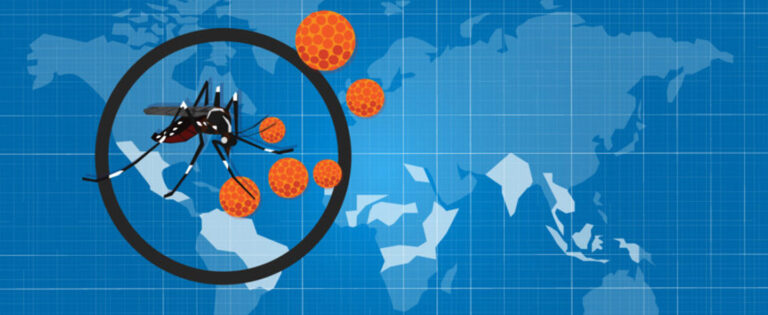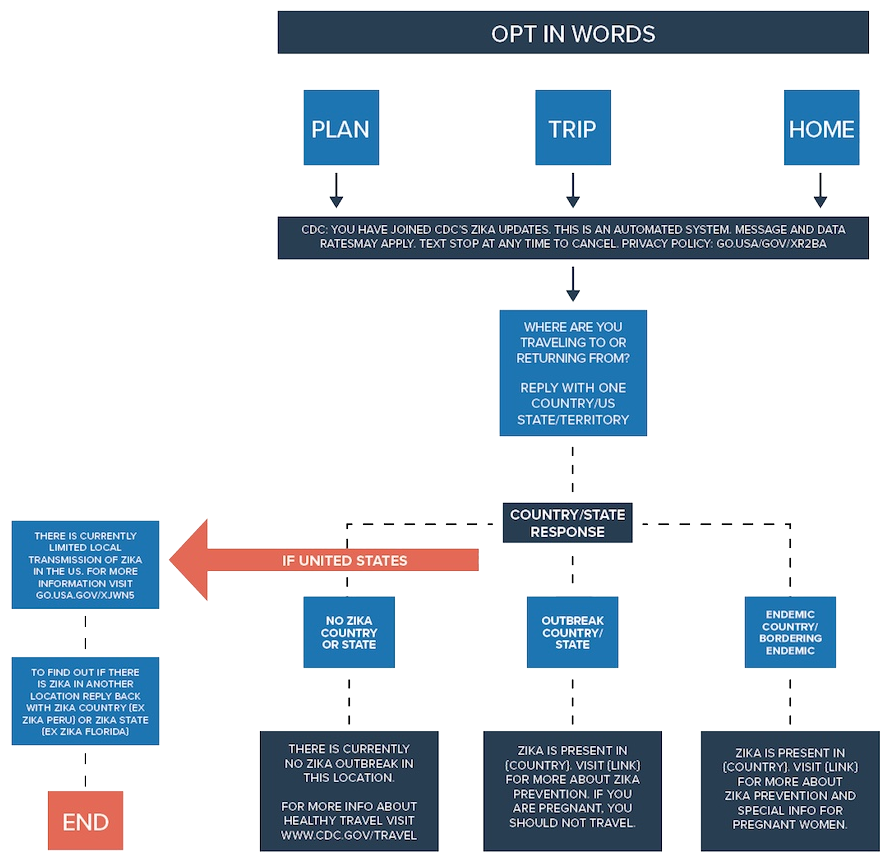
In the spring of 2016, the widespread outbreak of Zika was declared a global public health emergency. Across the Americas, the mosquito-born virus spread to over 1.5 million people and was linked to over 3,500 birth defects in newborn babies.
As the Zika virus spread, the Centers for Disease Control and Prevention (CDC) was working around the clock. From developing tests to diagnose Zika to monitoring and reporting cases worldwide, the CDC has been committed to addressing the outbreak.
And as details relating to Zika continued to evolve, the CDC knew they needed a way to connect with the public in real time with information they need in order to stay informed and be safe.
“The recent Zika outbreak prompted us to think about how we’re communicating with travelers during this time to prevent any further spread of the virus,” said Carolina Uribe, Public Health Advisor at the CDC. “We put ourselves in travelers’ shoes and came up with an idea.”
The CDC set up an Interactive Text platform with govDelivery that arms U.S. travelers with information on Zika prevention, transmission and recommendations for before and after travel.
Participants opted in with their cell phone by texting one of three designated opt-in words: PLAN, TRIP or HOME. The user was then prompted to indicate what country they are traveling to (also includes all 50 U.S. states). For those who were traveling to a country with a Zika outbreak, they are then provided with awareness and prevention messaging before, during and after travel.
Here’s how it worked:

With over 5 billion mobile phone users around the world, and at least 97 percent of Americans texting at least once a day, connecting with mobile users was the most impactful way for the CDC to engage with users as they are planning for or traveling to/from a country with Zika.
“Sending travelers messaging on prevention – using mosquito repellent, wearing long sleeves or pants, etc. – is important for us to send to travelers where they are, which is usually on their phone when traveling,” said Uribe.
Over 22,005 unique participants signed on to receive updates from the CDC on the Interactive Text platform, and 92 percent who answered a survey said they would use a CDC text messaging service in the future.
“With Interactive Text, we have the ability to send text messages to travelers who have subscribed for Zika-related information, but we’re also in a position where we could communicate on an emergency quickly with subscribers if we needed to,” said Uribe.
The texting service is also available in Spanish for travelers, which is important for the CDC’s audience who are traveling to Spanish-speaking countries where Zika has a presence.
By stepping into their audience’s shoes, the CDC determined that travelers don’t need to be bombarded with all information at once – they only need the right information. Text messaging helped them create a scope for what was absolutely necessary to send to subscribers, who have high engagement due to the opt-in nature of the platform.
“A disease can get anywhere in the world within 24 hours, so having this first line of connection with travelers to educate them on what they can do to prevent further spreading is really important to us,” said Uribe. “This is changing the way we connect with our audience, which may be something we look at doing permanently.”